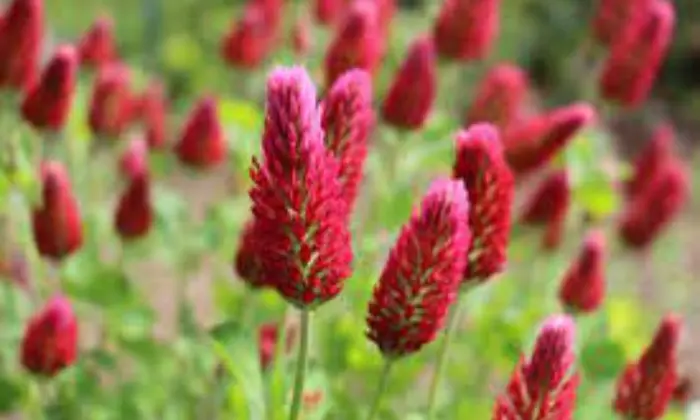In the realm of sustainable gardening practices, the concept of living mulch has been gaining significant attention. A boon for both the soil and the plants it nurtures, living mulch offers a natural and effective way to enhance the health and productivity of your garden. In this article, we delve into what living mulch is, its types, and the benefits it brings to your gardening endeavors.
What is Living Mulch
Living mulch refers to low-growing plants that are intentionally cultivated to cover and protect the soil surface in between rows of main crops or in garden beds. Unlike traditional mulches, such as wood chips or straw, living mulch consists of living vegetation. These plants play a vital role in improving soil fertility, moisture retention, weed suppression, and overall ecosystem health.

Types of Living Mulch
Explore a variety of options to enrich your garden soil and suppress weeds naturally.
Clover
Clover, particularly white clover (Trifolium repens) and red clover (Trifolium pratense), is one of the most popular choices for living mulch. It’s nitrogen-fixing, meaning it can capture atmospheric nitrogen and convert it into a form that plants can use, thereby enriching the soil. Clover also has dense foliage, which effectively suppresses weeds and prevents soil erosion.
Creeping Thyme
Creeping thyme (Thymus serpyllum) is another excellent option for living mulch. It forms a dense mat of aromatic foliage that not only inhibits weed growth but also releases a pleasant fragrance when walked upon. Creeping thyme is drought-tolerant and attracts pollinators, making it a multifunctional addition to your garden.
Creeping Jenny
Creeping Jenny (Lysimachia nummularia) is prized for its cascading habit and vibrant green leaves. This low-growing perennial thrives in moist conditions and is ideal for areas with poor drainage. Creeping Jenny effectively suppresses weeds while adding visual interest to garden borders or walkways.
Alfalfa
Alfalfa (Medicago sativa) is valued not only as a livestock feed but also as a beneficial living mulch. Its deep taproots help break up compacted soil, improve aeration, and enhance water infiltration. Alfalfa’s extensive root system also scavenges nutrients from deeper soil layers, making them available to neighboring plants.
Chamomile
Chamomile (Matricaria chamomilla) is renowned for its calming properties when brewed into tea, but it also serves as an excellent living mulch. Its feathery foliage suppresses weeds and conserves soil moisture, while its daisy-like flowers attract beneficial insects like hoverflies and parasitic wasps.

Benefits of Living Mulch
Living mulch conserves moisture, suppresses weeds, fosters soil health, and enhances nutrient cycling, promoting a sustainable and vibrant garden ecosystem.
Soil Health
Living mulch fosters soil biodiversity by providing a habitat for beneficial microbes and soil organisms, which contribute to nutrient cycling and disease suppression.
Weed Suppression:
The dense growth of living mulch shades the soil, inhibiting weed germination and growth, thus reducing the need for manual weeding or chemical herbicides.
Moisture Retention
By covering the soil surface, living mulch helps reduce moisture evaporation, ensuring a more consistent soil moisture level for plants, especially during hot and dry periods.
Habitats for Beneficial Insects
Living mulch fosters environments that attract and support beneficial insects, such as pollinators and pest predators, enhancing biodiversity in your garden.
Nutrient Cycling
Nitrogen-fixing plants like clover and alfalfa improve soil fertility by capturing atmospheric nitrogen and releasing it into the soil in a form that plants can utilize.
Incorporating living mulch into your gardening practices not only enhances the beauty of your landscape but also promotes ecological balance and sustainability. Whether you opt for clover, thyme, or any other type of living mulch, you’ll be reaping the benefits of healthier soil and more resilient plants in your garden.
Conclusion
In conclusion, embracing the concept of living mulch presents a myriad of benefits for your garden, from enhancing soil health to promoting weed suppression and moisture retention. By incorporating low-growing plants like clover, thyme, or chamomile as living mulch, you can create a thriving ecosystem that supports the growth of your main crops while fostering biodiversity and sustainability. For any inquiries or assistance regarding living mulch and sustainable gardening practices, please don’t hesitate to Contact Us.
FAQS
What Is Living Mulch?
Living mulch refers to low-growing plants that are intentionally cultivated to cover and protect the soil surface in gardens or agricultural fields. Unlike traditional mulches, living mulch consists of living vegetation, which offers numerous benefits such as weed suppression, moisture retention, and soil improvement.
2. What Are The Benefits Of Using Living Mulch?
Using living mulch in your garden offers several benefits, including:
Enhanced soil health and fertility.
Weed suppression, reducing the need for manual weeding.
Improved moisture retention in the soil.
Promotion of biodiversity and beneficial soil organisms.
Nutrient cycling, particularly with nitrogen-fixing plants like clover and alfalfa.
3. What Types Of Plants Can Be Used As Living Mulch?
Several types of plants can be used as living mulch, including:
Clover (white clover or red clover)
Creeping thyme
Creeping Jenny
Alfalfa
Chamomile
These plants are selected for their low-growing habit, ability to suppress weeds, and other beneficial characteristics.
4. How Do I Incorporate Living Mulch Into My Garden?
To incorporate living mulch into your garden, plant the selected low-growing plants in between rows of main crops or in garden beds. Allow them to establish and spread, covering the soil surface. Regular maintenance, such as mowing or trimming, may be required to keep the living mulch in check and prevent it from competing with your main crops.
5. Is Living Mulch Suitable For All Types Of Gardens?
Living mulch can be beneficial for various types of gardens, including vegetable gardens, flower beds, and even orchards. However, it’s essential to select plants that are well-suited to your specific growing conditions and gardening goals. Some plants may thrive better in certain climates or soil types than others.


